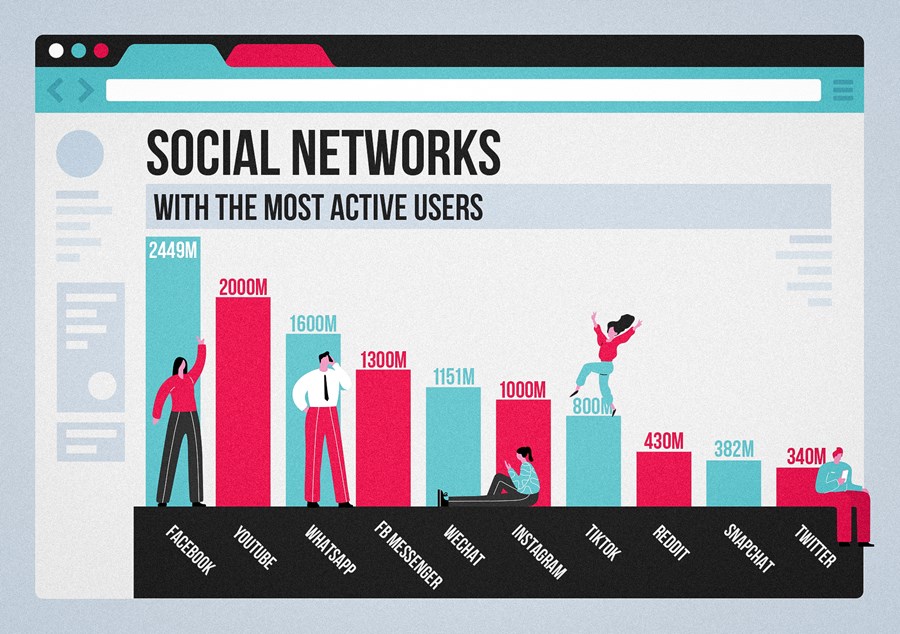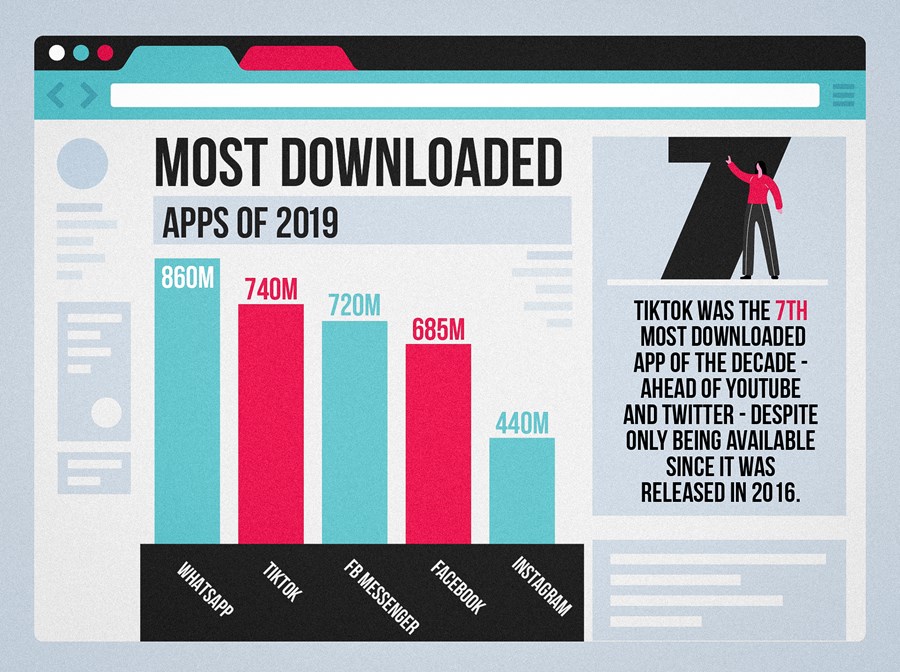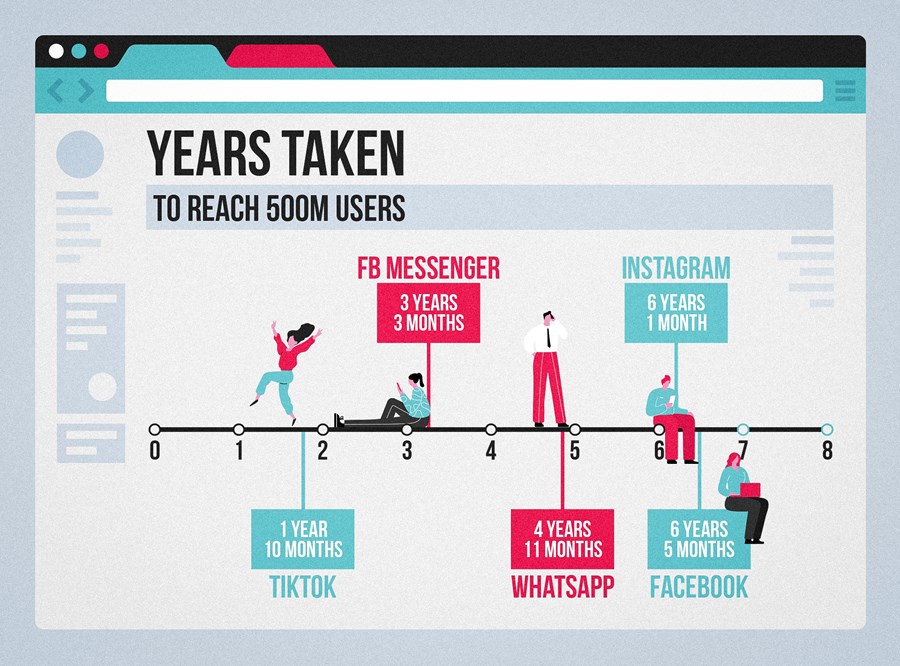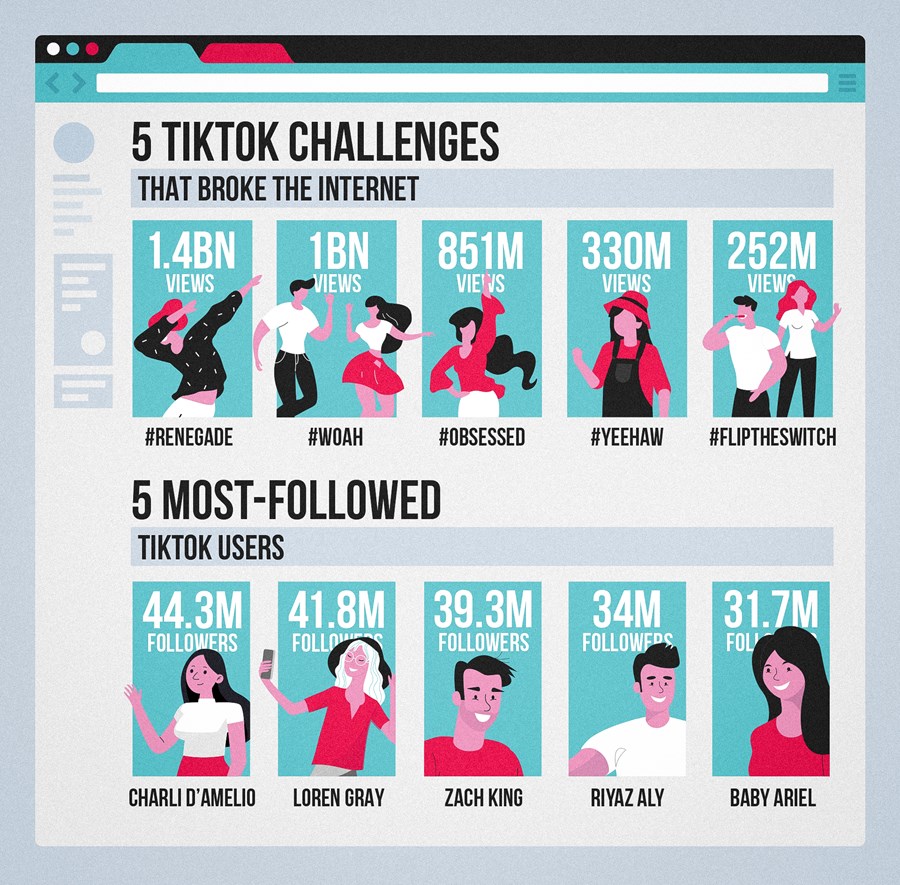Party don't stop: The rapid rise of TikTok

The video sharing app has been attracting users at an astonishing rate and, unlike social media fads of the past, may already be too big to fall.
TikTok is the social media giant that you may not have even heard of until recently.
The video-sharing platform, which allows users to watch and create 15-second clips accompanied by music, has been attracting new users at an astonishing rate.
It is the seventh-most popular social media platform in the world, with over 800m active users. That’s over 400m more than both Snapchat and Twitter.
Having only launched in China – where it is known as Douyin – in September 2016, the speed at which it has built such a vast following makes it one of the fastest-growing apps on the planet.

TikTok was only released globally in September 2017, which explains at least in part why it doesn’t have the brand recognition – outside of Asia, at least – as other established platforms.
Just a couple of months after that worldwide launch, Tik Tok’s parent company Bytedance – the world’s most valuable startup as of October 2018 – purchased Musical.ly, an almost identical rival platform, and later absorbed its 100 million active users into TikTok.
With a grip on the market for the lip-synching and dance videos that were growing particularly popular with under-18s, the app took off and hasn’t stopped since.
Celebrities like Dwayne 'The Rock' Johnson - who is 20/1 in the online betting odds to be the next Jack Reacher - are among the millions of people downloading the app to take part in dance crazes and challenges.
Only WhatsApp surpassed TikTok’s 740m downloads in 2019. Incredibly, it was the seventh-most downloaded app of the 2010s, despite being available for less than four years.

There have, of course, been social media networks that burned brightly in the past before fading away or being bought out by their competition.
Myspace was perhaps the first to gain immense popularity before it saw almost its entire market migrate to Facebook, while Vine thrived in the same space TikTok now occupies – short, viral videos – before it was acquired by Twitter in October 2012.
Those platforms never even came close to the popularity that TikTok has achieved, though.
At its peak, Vine claimed to have 200m active users, approximately a quarter of TikTok’s current amount.
Myspace, meanwhile, peaked at around 75m users, albeit at a time when fewer people used social media.
And unlike both of those platforms – and every other popular social media platform in the UK and US – TikTok has a massive following in China. ByteDance reports that Douyin has 400m daily active users, and that 68 per cent of social media users in China use the app.

TikTok may already be too big to fall, and forecasts suggest its popularity is going to continue to grow – although not at the same explosive rate – in the coming years.
Market research company eMarketer projects the number of TikTok users in the US to increase from 37.2m in 2019 to 45.4 million in 2020, and to reach 60.3m by the end of 2024.
The app is perfectly placed to take advantage of perhaps the most important trend in social media today – the growing power of video content.
According to a survey conducted by analytics company App Annie, video and entertainment apps accounted for 21 per cent of the hours spent on mobile apps worldwide in 2019. That’s up from 13 per cent in 2016.
As Facebook’s popularity slips – over a third of its users in the UK considered leaving the platform last year – it’s no surprise that the biggest social media platform in the world is also attempting to jump on the video bandwagon.
Having failed to acquire Musical.ly in 2016, Facebook quietly launched Lasso which, like TikTok, allows users to create 15-second video clips, in November 2018.
Lasso is currently only available in in the US and Latin America, but in 2020 will reportedly be launched in India, where TikTok has a community of 80 million active users.
In November 2019, Instagram trialled its own TikTok clone, a new feature called Reels.
It’s hard to see either of those gaining much of a foothold in the market, though, given TikTok’s immense popularity, which continues to grow around the world.

TikTok received more Google searches in the week ending 11 April 2020 than in any other week since its worldwide launch.
Part of that is likely the result of many more people staying at home.
According to a survey by Global Web Index, 14 per cent of internet users say they are creating and uploading more videos to platforms like YouTube and TikTok because of social distancing.
The challenges that TikTok is essentially built to house have been all over social media in the past few weeks, with families and couples taking part in dance crazes and performing comedy skits.
It’s too early to say whether that short-term boost will translate into a sustained increase in active users, but it certainly hasn’t hurt an app that was already gaining huge popularity.
Should that popularity keep extending outside of China to the US and UK, it’ll only be a matter of time until TikTok is challenging the world's biggest social media platforms.





































